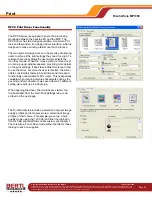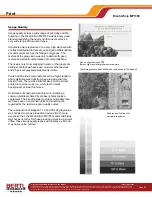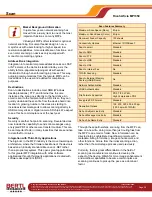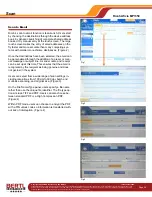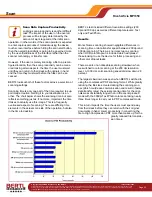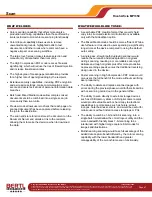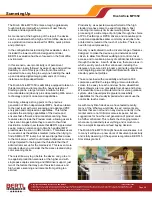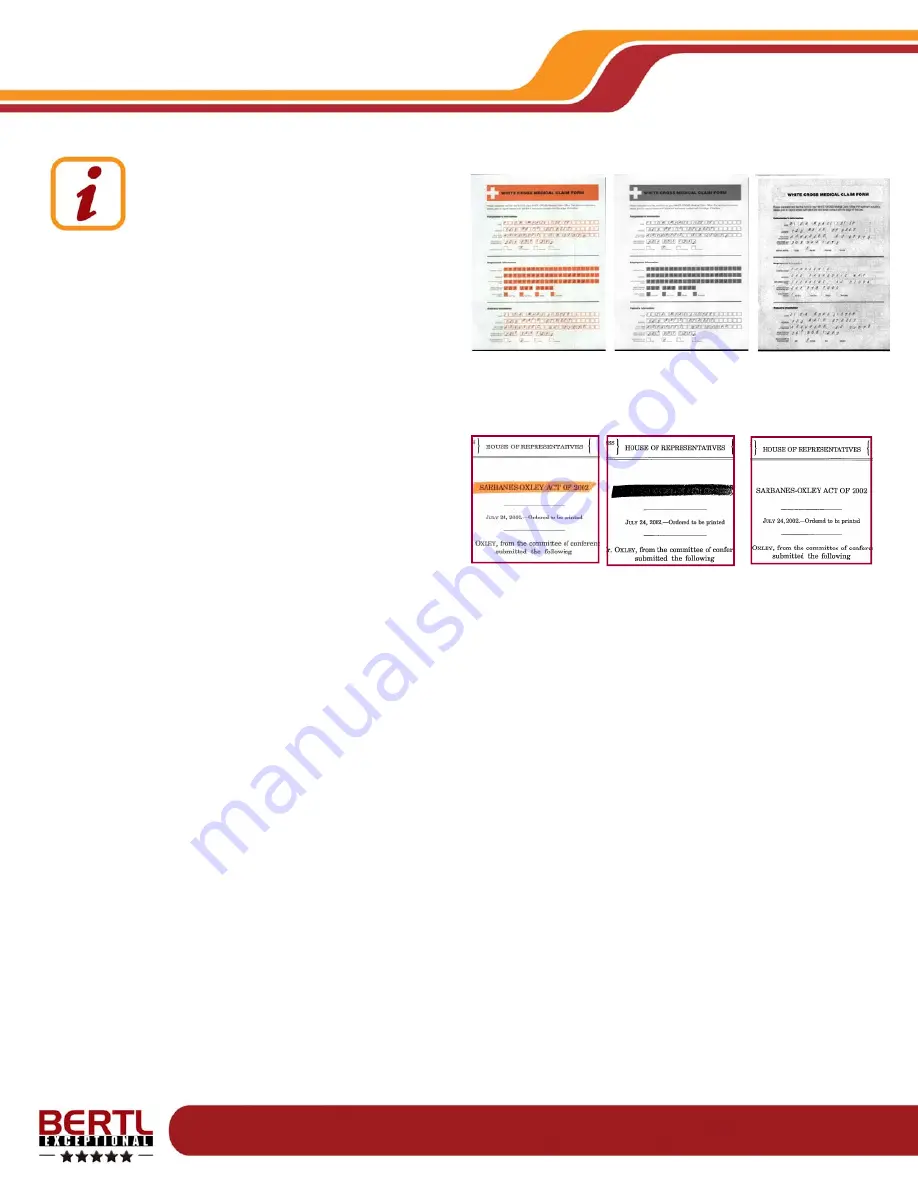
Copyright © 2006 MCA Internet, LLC dba BERTL.
13 November 2006
All Rights Reserved. The license under which this document is made available and applicable law prohibit any reproduction or further transmission of any portion of this document. This
document may only be viewed electronically through the www.BERTL.com Web site and may not be stored in electronic or hard copy format. Any reproduction of trademarks is strictly
prohibited. BERTL accepts no responsibility for any inaccuracies or omissions contained in this document.
Page 46
Ricoh Aficio MP1350
What Is Color Dropout?
Color dropout is a scanning feature that, as
the name suggests, removes a specific color
from a scanned image. Color dropout can
be carried out either at the hardware before
data transmission or on the desktop using software after
data transmission. The benefit of performing color drop-
out at the device stage is that the bandwidth associated
with the file now decreases dramatically due to the re-
moval of much of the image data. This bandwidth reduc-
tion puts less strain on the network and can have a
marked effect on the data transmission speed and time-
to-file availability.
Who Uses Color Dropout?
In short, anyone who processes forms will probably bene-
fit from color dropout technology: financial institutions
processing loan applications, insurance companies proc-
essing insurance claims, law firms removing highlighting
from discovery documents, government departments
processing tax rebates, immigration requests, grant sub-
missions, schools processing bubblesheet test sheets,
and others.
Forms often incorporate a background color within their
design to allow for easier navigation and improved com-
pletion accuracy. While the use of color makes
forms easier to read and complete, it adds an additional
burden when scanning the results into the business proc-
ess automation system used to analyze the completed
forms. The data found within the forms only needs to be
collected in black and white through processing by OCR
(optical character recognition) or ICR (intelligent charac-
ter recognition) software.
From that point on, the form is converted into binary data
and routed to a database or document management sys-
tem where it becomes part of the electronic workflow.
Rival MFPs can offer 2-bit or 8-bit monochrome scan-
ning, which reduces the bandwidth associated with color
scanning. But, the color data is still present in the docu-
ment, it is just in monochrome format. This means that, at
the least, the file size is going to be greater, increasing
transmission time and storage space. It can also mean
that documents are more difficult to process, especially if
the colored area is actually written over.
Scan
Left:
Original form with color background for easier navigation.
Middle:
Form scanned in Monochrome mode without color dropout is hard to
read and prone to image capture errors.
Right:
Form scanned using Color Dropout mode is now easy to read and
delivers high image capture accuracy.
Left:
This is an original document with highlighting.
Middle:
Original
scanned in Monochrome mode results in highlighted areas
being unreadable.
Right:
Original scanned with color dropout renders the document instantly
usable with no human intervention required
Color Dropout Productivity
In theory, color dropout could have an impact in two areas
of scanning: the scanning speed and the overall time to get
the color removed before data transmission can begin.
BERTL looked into this. We scanned 50 pages of a com-
pleted, standard government tax forms, running the same
job in both Monochrome Text mode and Color Dropout
mode.
We were pleasantly surprised to find that there was no slow
down in the scanning speed when color dropout was ap-
plied. This means that the process will not be adding to the
cost burden of the company in terms of human intervention
time. We were even more pleasantly surprised to see that
the data transmission time dropped 30 percent when we
applied color dropout and resulted in a bandwidth reduction
of 42 percent.
While these figures will obviously change from form to form,
depending upon the level of color dropout out, these figures
are a guide to the potential time and bandwidth savings that
a company could possibly achieve.



